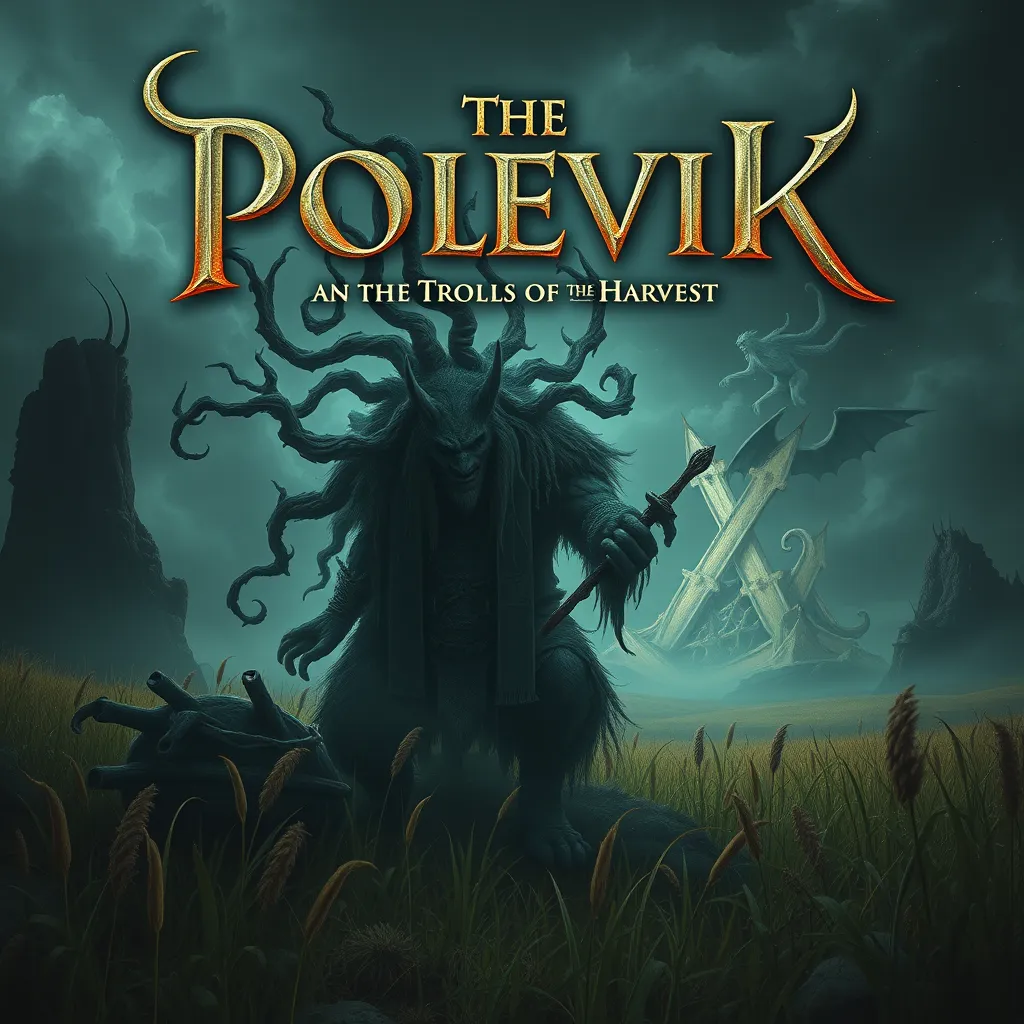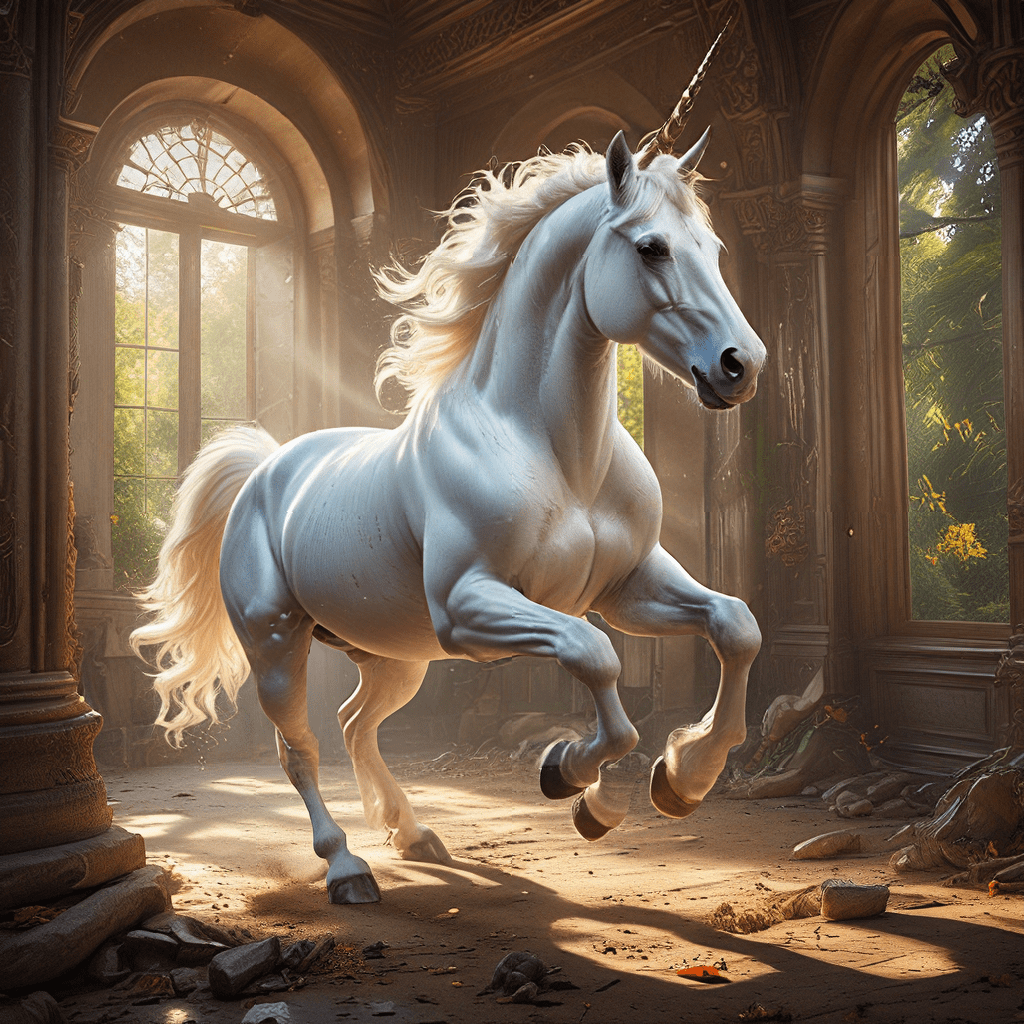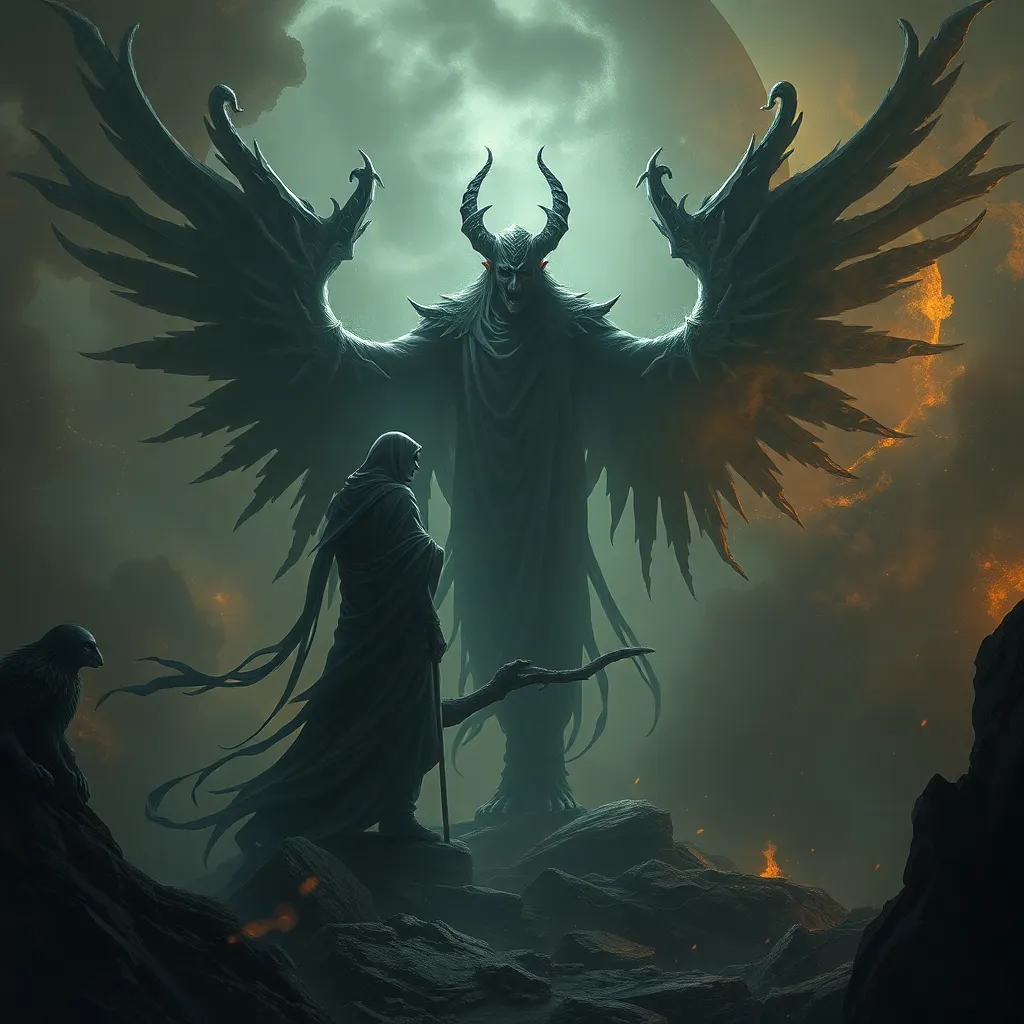The Polevik: Tales of the Field and the Trolls of the Harvest
I. Introduction
Slavic folklore is a rich tapestry of myths and legends that have been passed down through generations, reflecting the values, beliefs, and experiences of the Slavic people. One of the most intriguing figures in this folklore is the Polevik, a mythical creature deeply intertwined with agricultural life and the rhythms of nature. This article aims to explore the tales surrounding the Polevik, its cultural significance, and its lasting impact on Slavic traditions and modern interpretations.
II. The Origin of the Polevik
The Polevik has its roots in ancient Slavic mythology, where it was believed to inhabit the fields and meadows, representing the spirit of the land and its fertility. Traditionally depicted as a small, humanoid figure covered in grass and soil, the Polevik is often described as having a shaggy appearance, blending seamlessly into the agricultural landscape.
Historically, the Polevik was seen as a guardian of the fields, playing a crucial role in the lives of farmers. Its characteristics reflect both the nurturing aspect of nature and the unpredictable elements that can affect crop yields.
Characteristics and Appearance
- Short stature, often described as a small man or a child.
- Hair resembling grass or soil, camouflaging it within fields.
- Eyes that glow brightly, especially at night, guiding or misleading those who wander the fields.
Role in Agricultural Life
The Polevik was not just a mythical figure; it embodied the significance of agriculture in Slavic culture. Farmers believed that the Polevik could influence the fertility of their crops, making it essential to appease this spirit to ensure a bountiful harvest.
III. The Polevik in Folklore
Various stories and legends surround the Polevik, illustrating its complex relationship with humans. Common tales depict the Polevik as a mischievous entity, playing tricks on unsuspecting farmers. In contrast, other narratives portray it as a benevolent guardian, helping those who respect the land and its resources.
Regional Variations
Across different Slavic regions, variations of the Polevik exist, each with unique characteristics and stories:
- In Russia, the Polevik is often depicted as a trickster who leads travelers astray.
- In Ukraine, it is seen as a more benevolent figure, believed to help farmers in need.
- In Poland, similar creatures exist, such as the Poludnica, who also embodies the spirit of the fields.
Themes in Polevik Stories
The tales of the Polevik often revolve around themes of respect for nature, the balance between humans and the environment, and the consequences of neglecting agricultural practices. These stories serve as moral lessons, emphasizing the importance of harmony with the land.
IV. The Polevik’s Relationship with Farmers
The relationship between the Polevik and farmers is a dual one, characterized by both protection and mischief. Farmers viewed the Polevik as a guardian who could influence their crops’ success but also as a trickster who could disrupt their work.
Protector or Prankster?
Farmers developed rituals to appease the Polevik, ensuring their fields remained prosperous:
- Leaving offerings of bread and milk in the fields.
- Performing dances and songs during harvest festivals.
- Creating small shrines or altars near the fields.
Encounters with the Polevik
Many stories recount encounters between farmers and the Polevik. These narratives often highlight the importance of respect and understanding in dealing with nature’s spirits. Some farmers reported having positive interactions, where the Polevik aided them in their work, while others faced its mischievous side, resulting in lost tools or bewildering experiences in the fields.
V. The Polevik and the Harvest
The harvest holds a central place in Slavic culture, symbolizing not only sustenance but also community and celebration. The Polevik’s role in determining the success of crops made it a figure of great importance during harvest time.
Significance of the Harvest
In Slavic societies, the harvest season is marked by various traditions, including:
- Harvest festivals celebrating the end of the agricultural cycle.
- Rituals to thank the Polevik for its blessings.
- Communal gatherings to share the bounty of the fields.
Folkloric Explanations of Harvest Success
Folklore often explains good and bad harvests through the actions of the Polevik. A bountiful harvest was attributed to the Polevik’s favor, while a poor yield was seen as a sign of its displeasure or neglect by the farmers.
VI. The Polevik in Modern Culture
Today, the tales of the Polevik continue to influence literature, art, and popular culture. Its legacy is evident in various forms of contemporary media, from children’s books to animated films, which reinterpret the Polevik’s character and stories.
Influence in Literature and Art
Modern authors and artists draw inspiration from Slavic folklore, incorporating the Polevik into their works. The creature’s dual nature as both protector and prankster resonates with audiences, serving as a metaphor for the complexities of human relationships with nature.
Contemporary Adaptations
Recent adaptations of Polevik tales emphasize environmental themes, highlighting the importance of sustainable farming practices and the need to respect nature. This relevance speaks to today’s agricultural challenges and the ongoing dialogue about humanity’s relationship with the earth.
VII. Comparative Mythology: The Polevik and Other Harvest Spirits
Comparative mythology reveals that many cultures possess similar mythical beings associated with agriculture. The Polevik shares traits with various harvest spirits worldwide, reflecting universal themes in folklore.
Similar Mythical Creatures
- The Irish Leprechaun, known for its mischievous behavior.
- The Greek Demeter, goddess of the harvest and agriculture.
- The Native American Manitou, representing natural spirits.
Universal Themes
These creatures often embody the relationship between humans and nature, emphasizing respect, balance, and the dualities of protection and trickery. Such themes highlight the shared human experience across cultures in understanding the natural world.
VIII. Conclusion
The Polevik remains a significant figure in Slavic folklore, encapsulating the agricultural traditions and beliefs of the Slavic people. Its stories not only entertain but also educate, conveying vital lessons about nature and our place within it.
As modern culture continues to evolve, the legacy of the Polevik endures, reminding us of the importance of preserving folklore and traditions. By understanding these mythical creatures, we connect with our heritage and gain insights into the timeless relationship between humanity and the natural world.



